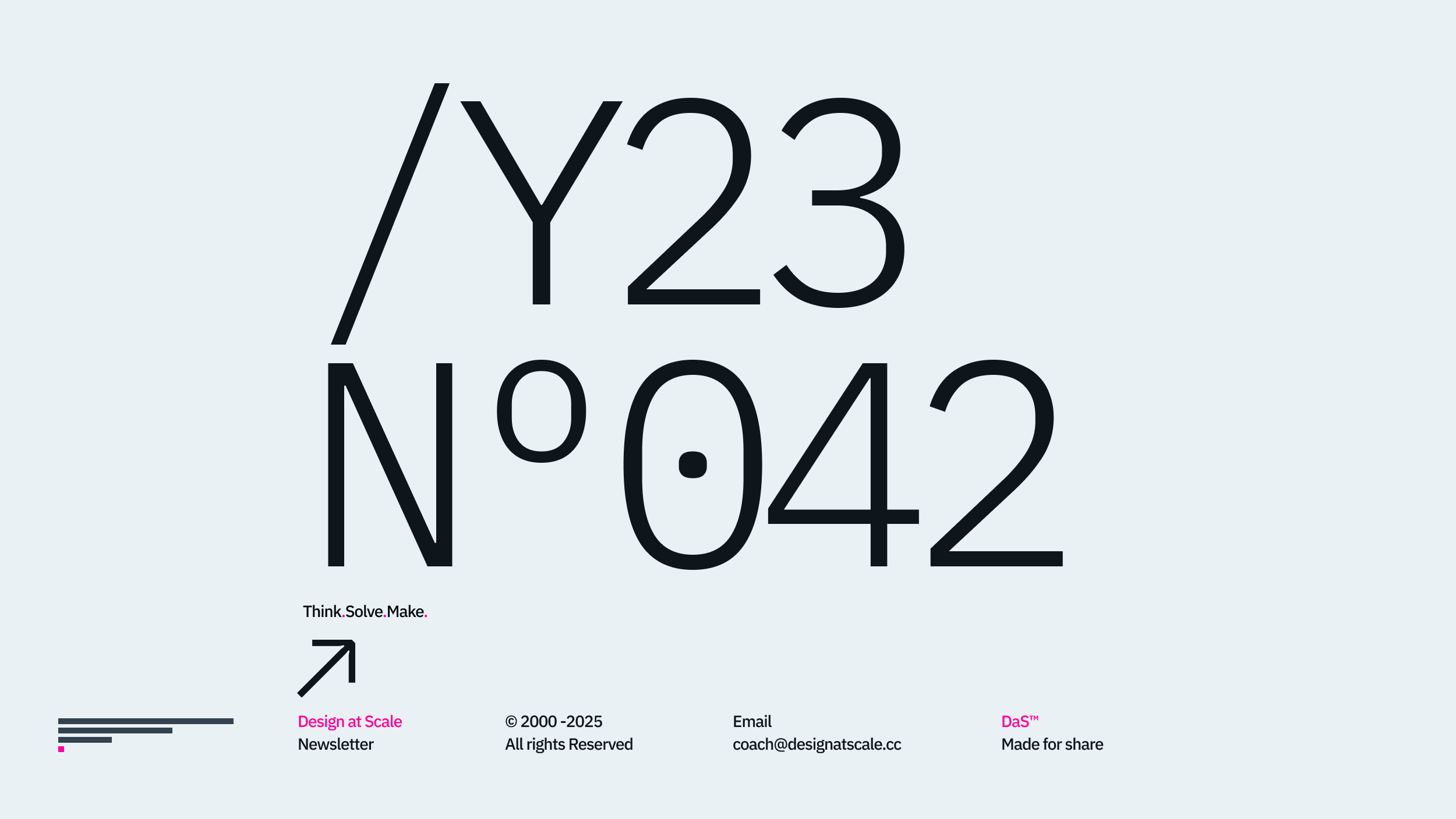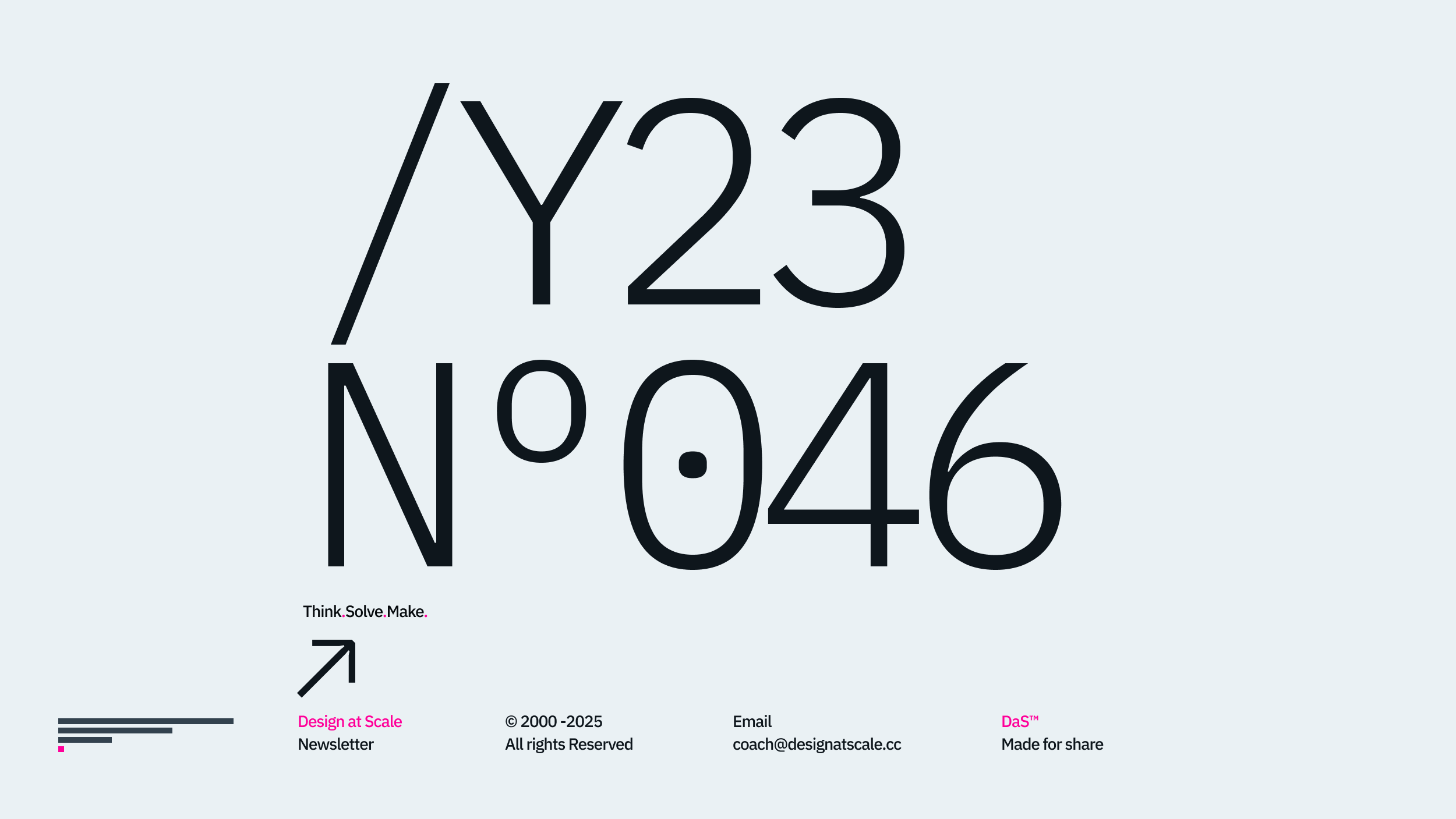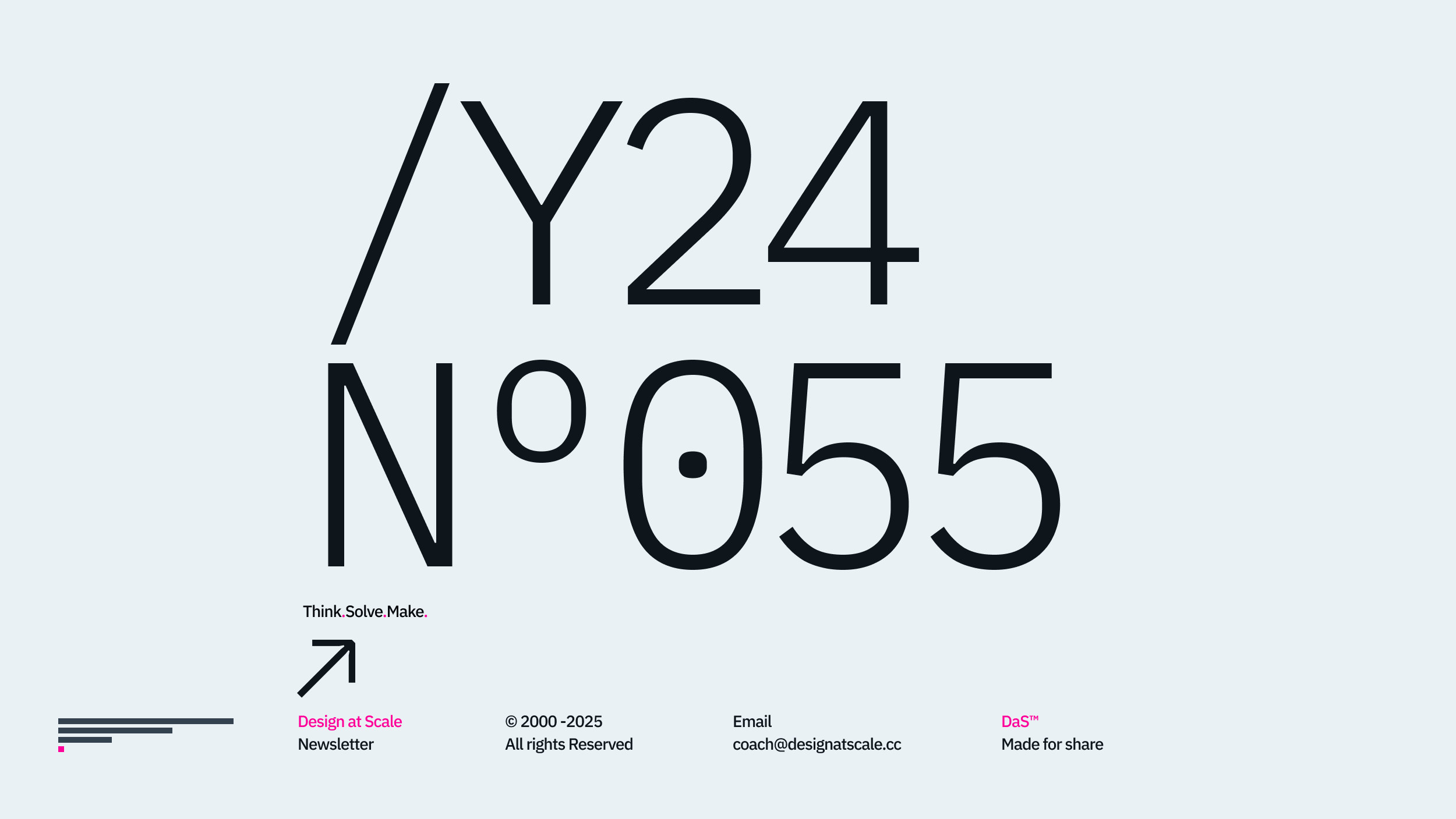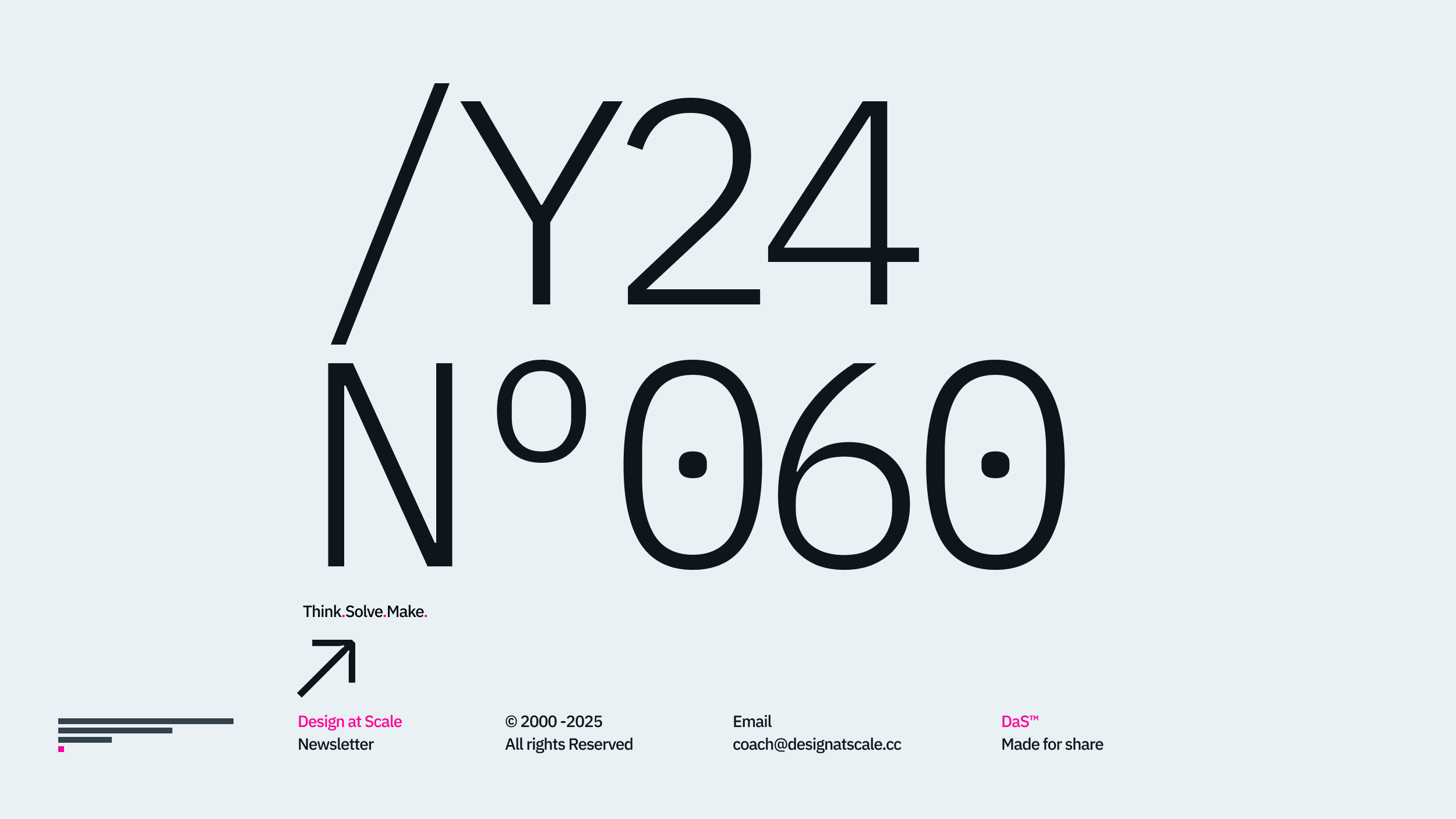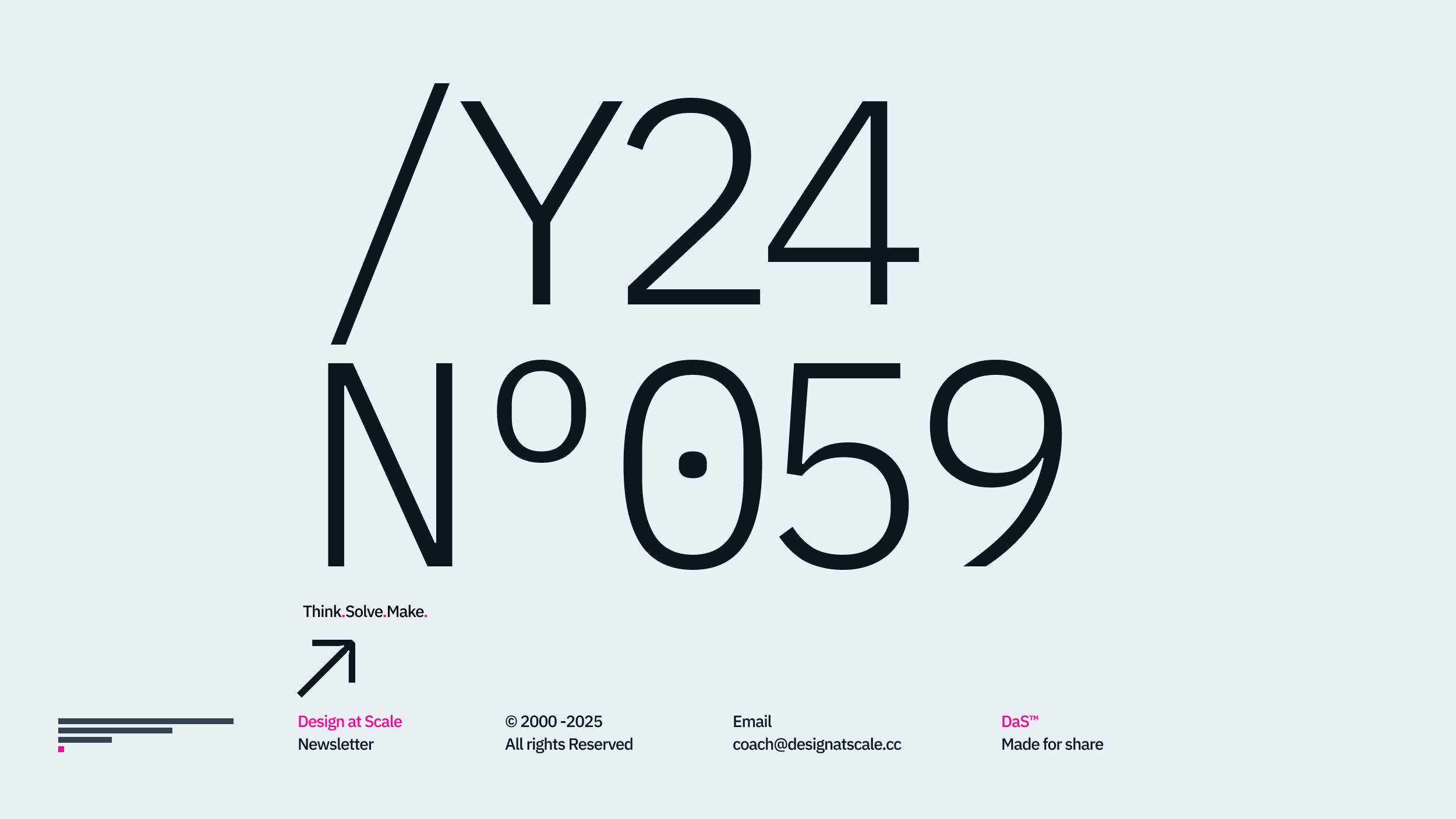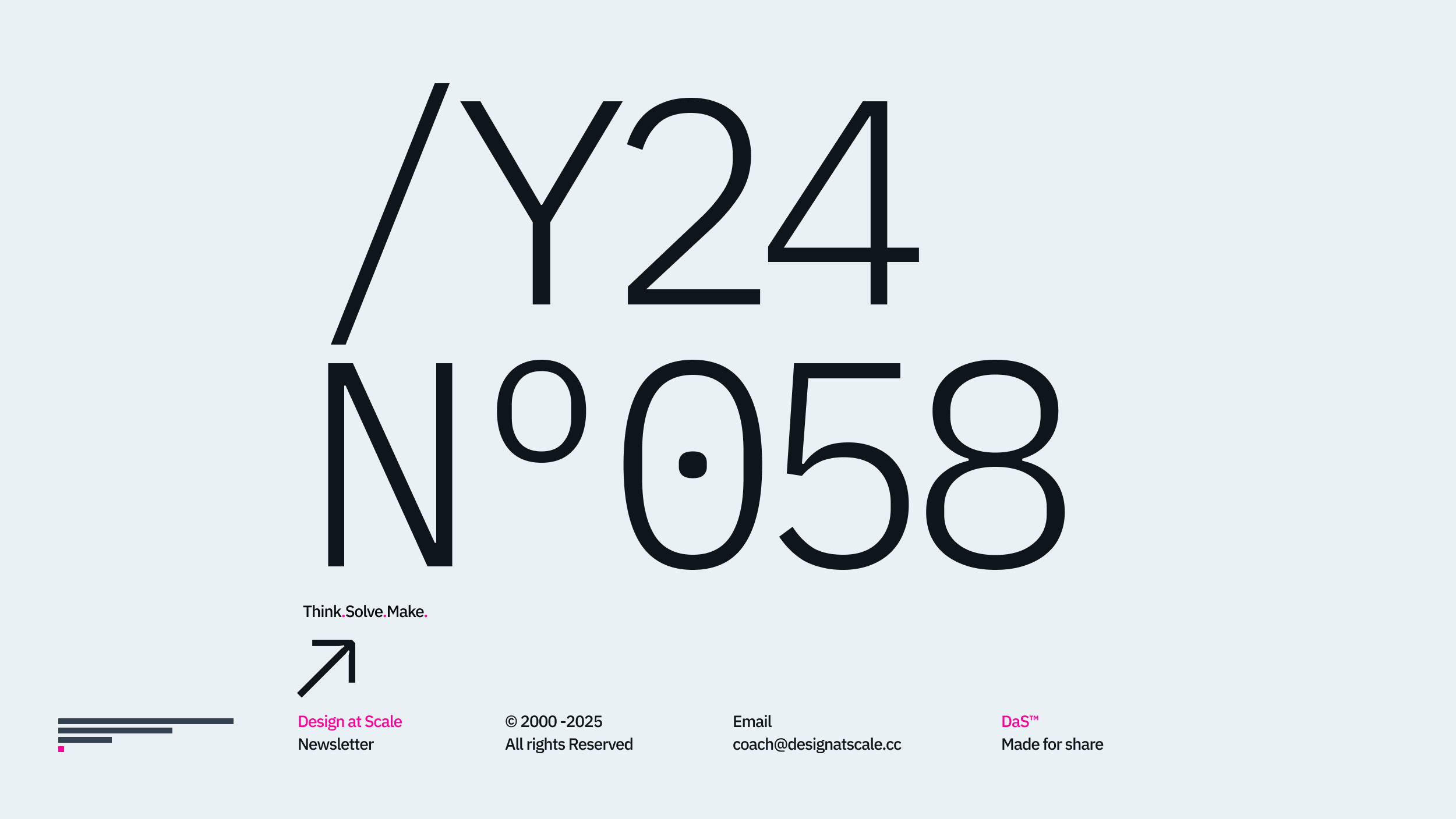Dear (none)Designer,
Welcome back to the sixty-seventh Design at Scale™ Newsletter – focusing on innovation and how design drives change in a large organisation or an agency.
Building a product design team with knowledge from Design at Scale™ involves adopting a specific mindset and implementing principles that foster collaboration, efficiency, and consistent delivery as the team and product grow.
Here's a breakdown of key aspects:
Understanding Design at Scale™ Principles:
Design at Scale™ emphasises a structured approach to design that focuses on three main pillars:
- Experience (User-centred):
- Simplicity:
- Communication:
- Adaptability:
- Growth (Product-team centred):
- Trust:
- Self-organizing:
- Design and Technical Excellence:
- Contribution (Integration & Scale-centred):
- Continuous Contribution:
- Working Prototypes:
- Sustainable Development
When building a product design team, we are often advised ot define our needs and hire strategically. Starting with the current state and understanding of your company's strengths and weaknesses is fundamental, yet not definitive. Design at Scale™ has proven that learning and the ability to adapt are far more important factors in small agile team. Hiring a generalist, someone versatile enough to handle diverse tasks and establish the foundational design culture. Identify broader team needs, considering the perspectives of design, product, and technology. Prioritising strong hires—individuals who are genuinely excited to collaborate, while elevating the entire team. We focus on candidates that add value to the culture rather than just fitting in, actively promoting diversity of makers, scientists and creative thinkers over the expensive recruitment.
Our optimised processes and frameworks for scale are crucial to adopting a single platform like Figma or Atlassian as an integrated knowledge base. A consistent set of tools from wireframes to developer handoffs, which significantly boosts collaboration and operational efficiency. Our essential baseline is the robust design system in code. This ecosystem is fully automated, ensuring a standardised documentation of all components and guidelines that drive a clear process for communicating changes. Crucial to our teams is fostering a contribution-friendly environment where all team members feel empowered to enrich and improve the system. We build working prototypes; these are vital for validating ideas and streamlining communication with both stakeholders and development teams.
Collaboration and transparency, Design at Scale™ emphasises breaking down organisational silos, particularly between design and other critical functions like product and engineering. It's crucial to ensure cross-functional alignment, meaning design goals should directly support business objectives and designers should fully grasp the broader business context. Implementing regular rituals, such as critique sessions and progress reviews, helps maintain this alignment and facilitates continuous knowledge sharing. Furthermore, encourage an environment of openness by having designers share their work daily on accessible boards, promoting maximum transparency across the entire team.
Our approach to leadership and growth at scale recognises that management has a distinct path from individual contribution. A focus on effective team formation, cultivating a strong culture, and strategic decision-making. Leaders lead by example, consistently demonstrating the values they wish to see in their team; this includes being transparent about failures, encouraging open communication, and empowering others to voice their ideas. It's vital to invest in people by understanding necessary skills, making the right hires, and dedicating time to build a cohesive team culture while providing ample support and opportunities for professional growth. Ultimately, leaders should foster strategic thinking among designers, encouraging them to look beyond mere aesthetics to focus on measurable outcomes and the broader impact on both the business and the user.
Find out more at Design at Scale™ – GRID Managzine.





